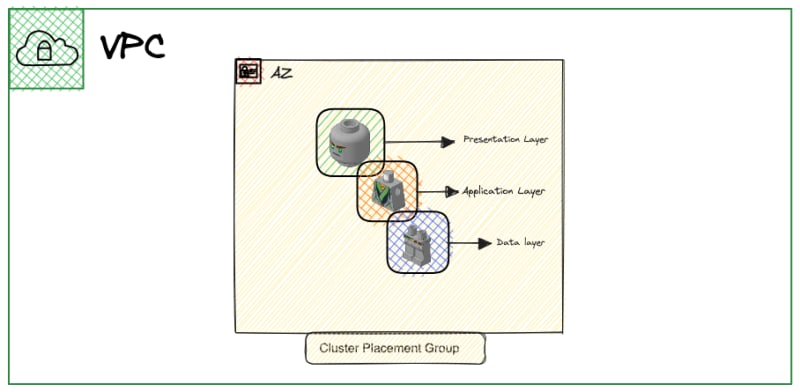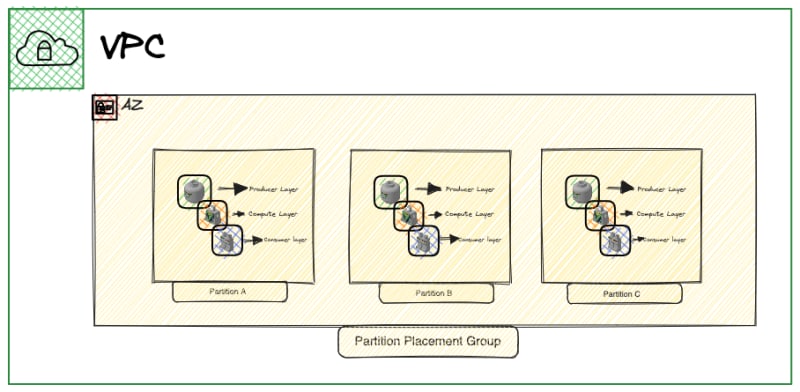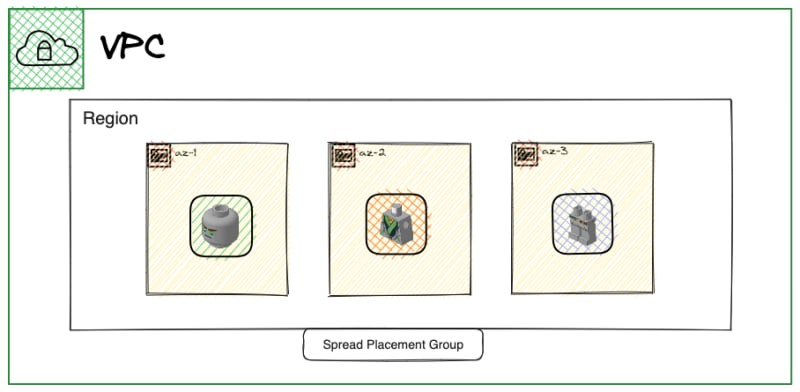AWS has a lot of exciting features that you can utilize while building highly optimized applications. In this article, we’ll explore Placement Groups and their strategies to architect better-optimized applications, looking at it from a Lego perspective.
What is AWS Placement Group?
Placement groups let you choose the logical placement of your EC2 instances to achieve a more optimized communication, performance, or fault tolerance within a single Availability Zone(AZ).
At heart, working with placement groups is similar to creating intricate structures with Lego blocks. Each block represents a component of your design, and how you place these blocks together can impact your creation’s overall stability and performance.
In the world of AWS (Amazon Web Services), similar principles apply when it comes to deploying your infrastructure. AWS Placement Groups offer a way to control how Amazon EC2 instances are placed within a cluster, much like the way you strategically position Lego blocks for optimal structural integrity.
By understanding this Lego analogy, you can easily grasp the concept of AWS Placement Groups and make informed decisions when it comes to architecting your AWS environment.
Choosing the appropriate Placement Group strategy is essential for optimal performance and reliability in your AWS environment. Some key points to keep in mind:
- Cluster Placement Groups – Clusters instances into low-latency groups in a single AZ
- Partition Placement Groups – Spread instances across logical partitions to reduce the likelihood of correlated hardware failure for your application.
- Spread Placement Groups – Layout instances across distinct underlying hardware.
Cluster Placement Group
Imagine constructing a massive Lego tower where each block is tightly integrated with one another. This technique optimizes communication between blocks and ensures stability. In AWS, Cluster Placement Groups offer similar benefits by maximizing network performance and minimizing inter-instance latency within a single AZ.

Cluster Placement Groups is recommended when instances between the group benefits from close proximity, vast network traffic to achieve low latency and high network throughput.
Partition Placement Group
Picture creating a partitioned Lego structure where each section represents a specific function or workload. Similarly, Partition Placement Groups in AWS enable you to create logical partitions, ensuring instances within the same partition share the same rack, which can be beneficial for applications that require low latency and high throughput within a single AZ (Availability Zone).

Partition placement is typical for large distributed and replicated workloads like Kafka, as it distributes the instances evenly across the number of partitions that you specify. You can also launch instances into a specific partition to have more control over where the instances are placed.
Spread Placement Group
Imagine creating a Lego structure by distributing each block evenly across multiple plates. This technique helps minimize the impact of hardware failures, ensuring that instances are placed on separate underlying infrastructure. In AWS, Spread Placement Groups follow a similar logic, maximizing availability by spreading instances across distinct hardware.

In this case, all the EC2 instances are located in different hardware; placing different groups across isolated hardware can help reduce simultaneous failure within the application while promoting independent scalability across the group.
Conclusion
At Blackthorn, we utilize the Cluster Placement Group to enhance the performance and reliability of our Server, Worker, Database, and Caching components. By ensuring close physical proximity and minimizing network latency, they optimize communication and coordination among these components, improving application stability, scalability, and user experience.
Understanding AWS Placement Groups can be simplified by using the Lego analogy. By visualizing how Lego structures are built, you can grasp the concept of grouping EC2 instances together for better performance and reliability. Just as master builders carefully select and position Lego blocks, AWS users can make informed decisions about their infrastructure design by leveraging the power of AWS Placement Groups.
More Resources
Placement group rules and Limitations
Creating Placement Group – Follow through